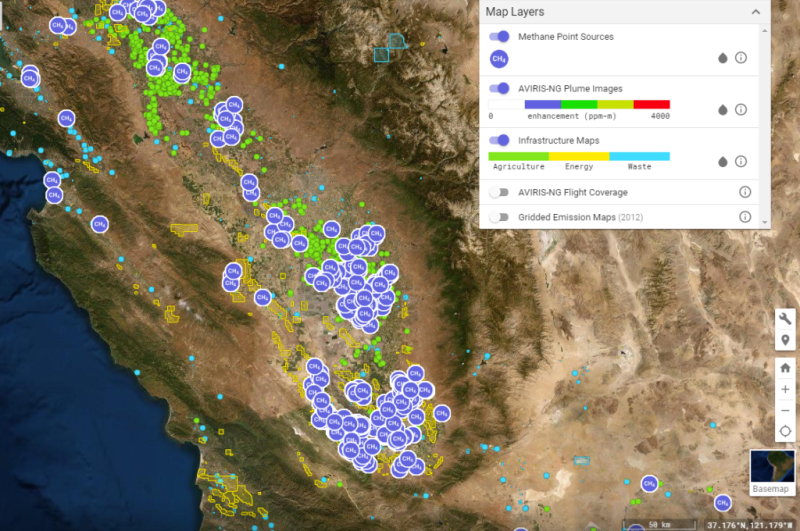The oil and gas industry is a major emitter of methane, but there are others in that league.
A study by a research team at NASA observed that 41% of the methane emissions in California observed were from landfills, while oil and gas operations represented 26% of the total, tied with dairy farms where manure is a source of methane, according to an article in the journal Nature.
Planes equipped with an infrared imaging spectrometer identified plumes of methane from facilities less than 10 m across. Dozens of flights over a 3-year period identified, located, and measured emissions at 272,000 locations.
It found that about 10% of the sources were responsible for 60% of the state’s methane emissions.
For example, it found that out of the 270 landfalls surveyed in California, only 30 “were observed to emit large plumes of methane.” Those 30 were responsible for 40% of the total point-source emissions detected, according to a release from NASA.
An interactive map displaying icons shows clusters of emitters, linking to lists naming the sources of methane but not how much each source emitted. There were many dairy farms, landfills, and composting sites. Energy sources included power plants and compression stations, but oil fields outnumbered those sources by a wide margin.

The oilfields are some of the biggest producers in the country, included Belridge, Midway-Sunset, and Kern River. Most of those are old fields where enhanced oil recovery methods, such as steam flooding, are required to sustain heavy oil production. Only one California field, Elk Hills, is one of 100 largest gas producers in the US.
The flyovers done from 2016 to 2018 were “a first attempt to estimate emissions from individual methane sources from a large population distributed across such an extensive area over multiple years,” according to NASA.
Measuring gas emissions is an emerging technology and there are disputes over the accuracy of measurement methods. Airborne surveys of total methane emissions are regularly higher than ones done on the ground.
The study, done in partnership with the California Air Resources Board (CARB) and the California Energy Commission, will be used to improve plans to target major sources of methane emissions, said Mary Nichols, chair of CARB.
There are methods for reducing methane emissions from the largest sources identified in the study:
Wells in landfills produce gas that is used to generate electricity. The largest private company in the business, Waste Management, said it generates 550 mw of electricity using captured gas, which is enough to power 440,000 homes, according to its website. The company has also developed a method to use methane to power vehicles.
Oilfield inspection programs that identify and repair leaks are used to reduce emissions. Eliminating older devices, some of which were designed to bleed gas, can help.
California, which has set a goal to reduce emissions from dairy farms, believes changing how dairy cow manure accumulation is managed could significantly lower emissions, according to a study in the Journal of Dairy Science.



